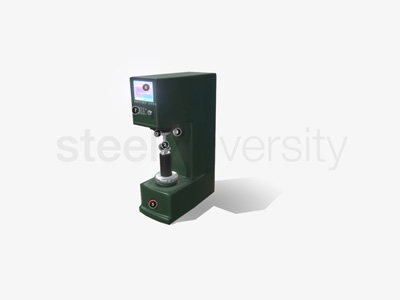Description
Estimated time: 0.50 hours
The Brinell scale is one of several definitions of hardness in materials science. Proposed by Swedish engineer Johan August Brinell in 1900, it was the first widely used and standardised hardness test in engineering and metallurgy. The large size of indentation and possible damage to test-piece limits its usefulness. The typical test uses a 10 millimetres (0.39 in) diameter steel ball as an indenter with a 3,000 kgf (29.42 kN; 6,614 lbf) force. For softer materials, a smaller force is used; for harder materials, a tungsten carbide ball is substituted for the steel ball.
The resulting impression is measured with a specially designed Brinell microscope or optical system across at least two diameters – usually at right angles to each other and these results are averaged (d). Most often a chart is then used to convert the averaged diameter measurement to a Brinell hardness number.
Course Content



